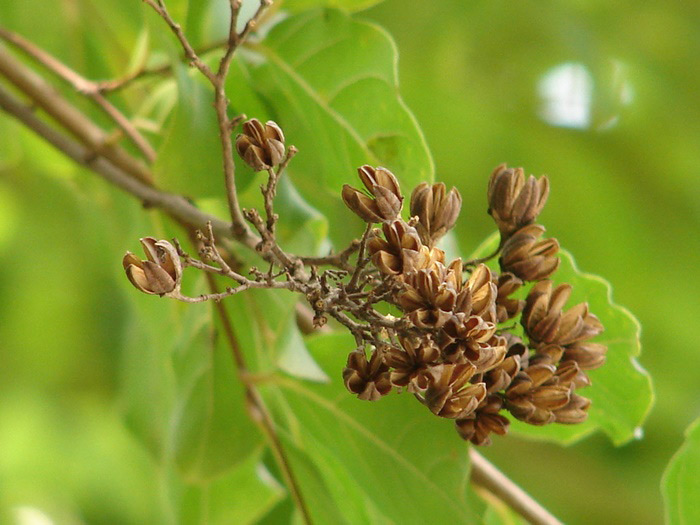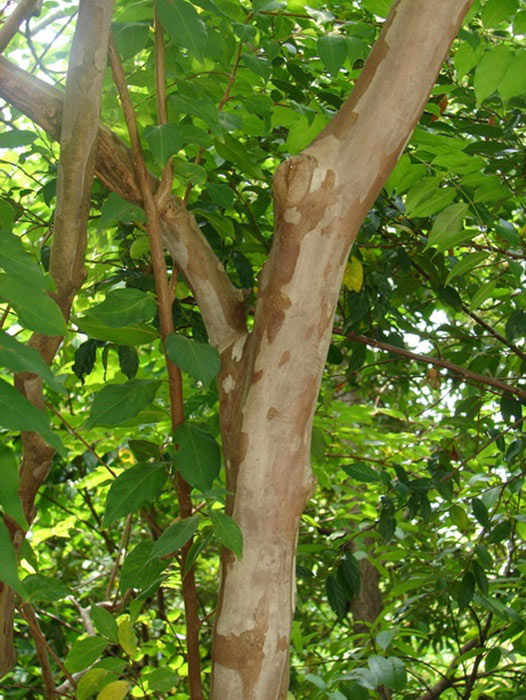Lagerstroemia subcostata
The subcostate crape myrtle is native to Taiwan and is commonly found from lowlands up to elevations of about 1,500 meters. It is a drought-tolerant and hardy plant that thrives in exposed and disturbed areas such as landslides. Globally, it is distributed across China, the Ryukyu Islands, and Taiwan. In this museum, subcostate crape myrtles are planted in the Taitung Cycads Area and the Monsoon Rain Forest Area of the Botanical Garden, as well as in the outdoor garden area beside the Information Building, where some tall plants can be seen.
Compared to other plants, the subcostate crape myrtle is relatively easy to identify. Its bark peels off periodically, leaving the surface smooth and sleek—so smooth that even monkeys have difficulty climbing it. For this reason, it is also known by local nicknames such as “monkey-slippery tree” and “monkey-doesn’t-climb.” In early Taiwan history, particularly during the founding of Yilan City, subcostate crape myrtles were planted around the city as a natural defense using their smooth bark to prevent enemies from easily climbing the walls.
Although its flowering period is brief, the subcostate crape myrtle produces small, white blossoms that are fresh and elegant, offering ornamental value. When the fruit ripens, it naturally splits into five segments, resembling a flower in shape. Despite their small size, the fruits have delicate shapes, and many people collect them as decorative items. Additionally, the seeds of the subcostate crape myrtle are winged, allowing them to be effectively dispersed by the wind.
The subcostate crape myrtle possesses exceptional environmental resilience and can thrive even in subarid or infertile land. Its wood is dense and durable, and was traditionally used for making charcoal and agricultural tools. Beyond its practical uses, the subcostate crape myrtle is also valued in horticulture for its graceful and varied tree form, and is often cultivated as a bonsai or used as an ornamental tree in gardens and landscapes.

